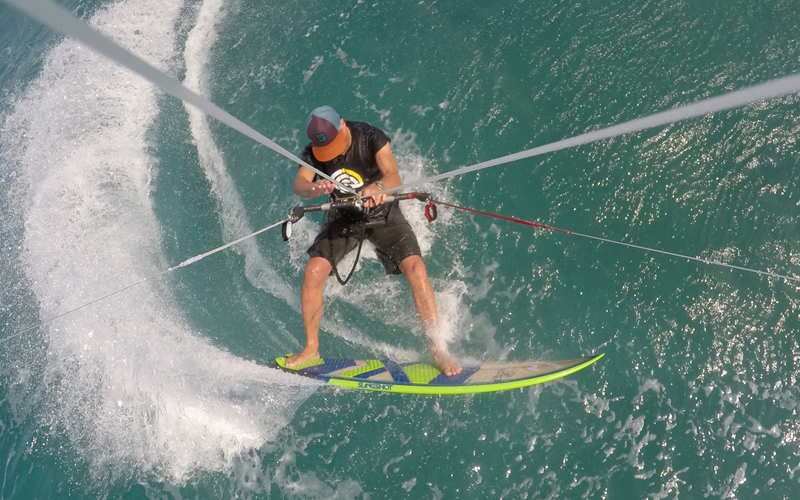After a private coaching session I always try to write my clients a follow up email of our coaching session as a reminder of all the things they learned while riding with me. Sometimes it’s hard to remember all that was said while on the water. I find a written summary a great way to help the coaching message sink in better, and it is a great reminder of what to practice. This explanation of linking a toe side to heel side turn on a wave is for my friend Elliot who recently rode with me in Cabarete.
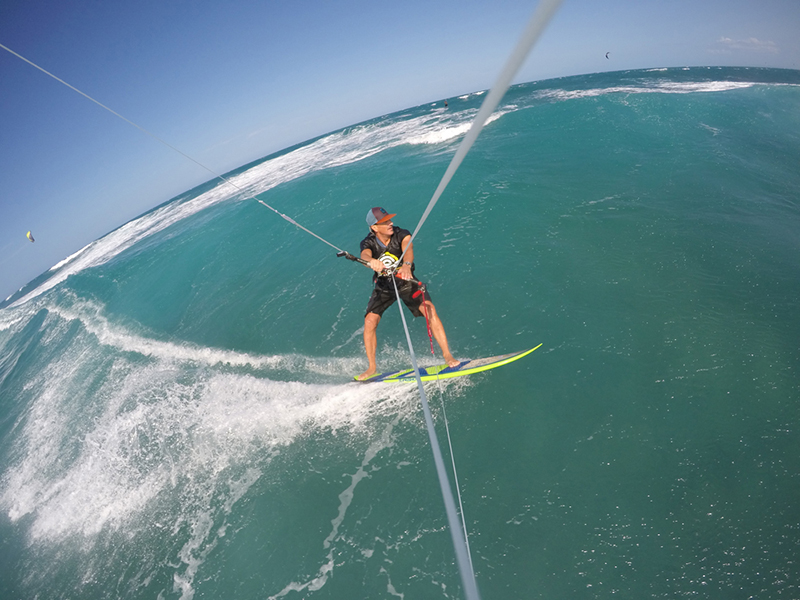
1. Find your Dance Partner.
Find your wave. By coming into the waves from the long tack, which means coming into the waves from behind, heading towards the reef, I can see the swell and pick out the wave that I think will be the best in the wave set. Once I choose my wave, I track it and look for where the peak will break. I aim to do my toe side turn just before the peak while dropping into the wave.
Always turn the kite before the board. To initiate my kite movement, I throw my weight backwards to create line tension so that my kite will respond faster when I pull on the bar. You can see my right hand turning the bar, and my left fingers only holding the bar for control, they have no grip.
The lower your kite sits in the sky before beginning its turn, combined with how hard you turn the bar, will dictate the speed at which the kite travels across the window, and in consequence how much power the kite will deliver, and how fast you’ll get pulled through the turn. As I’m dropping into the wave on my toe side turn, I really want my kite to cross the window quickly so that when I accelerate down the wave face I don’t speed towards my kite and lose line tension. This is critical. If you outrun your kite in waves and it hits the water mid swell, all bets are off. Always steers the kite to maintain line tension.
My back foot is directly over the fins for the most control. The further back your foot, the more leverage you’ll have over the board and the more powerful the turn/cutback. Note: The further back your back foot, the slower the board will glide as the tail will sit lower in the water, causing more water resistance drag.
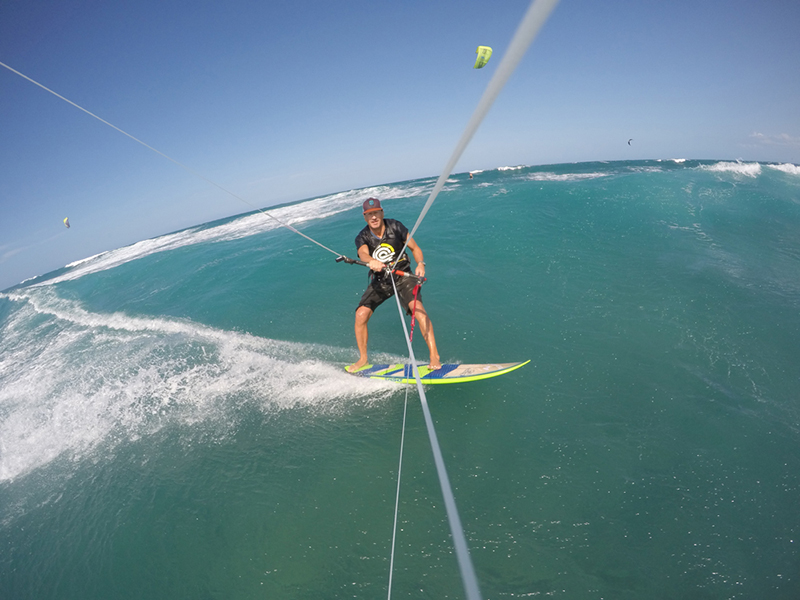
2. The Kite Always Gets the First Turn.
Still edging, you can see by my rear kite lines that the kite has already started to change direction. I wait until the kite reaches the rotation point where I will let off the edge and let the kite pull me through the turn. Wherever the kite is in its rotation when you let off your board edge that is the direction it will continue traveling. If your leading edge is facing up when you let off your board edge, your kite will go up. You want to wait until the leading edge starts going in the opposite direction before you let off your board edge.
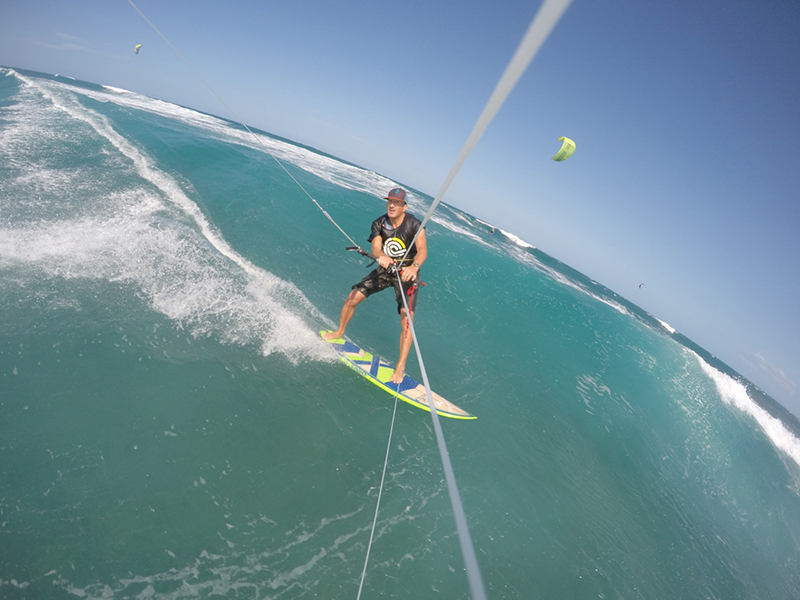
3. Reading the Wave.
I’m still on my edge waiting for my kite to get to the rotation point I desire. I’m still pulling the bar with my steering hand. Looking at my rear lines, my kite is almost to the rotation point. I’m turning my head to look down wind and back to the wave face where I’ll want to make my cutback. I’m watching the wave and looking for the steepest part of the wave.
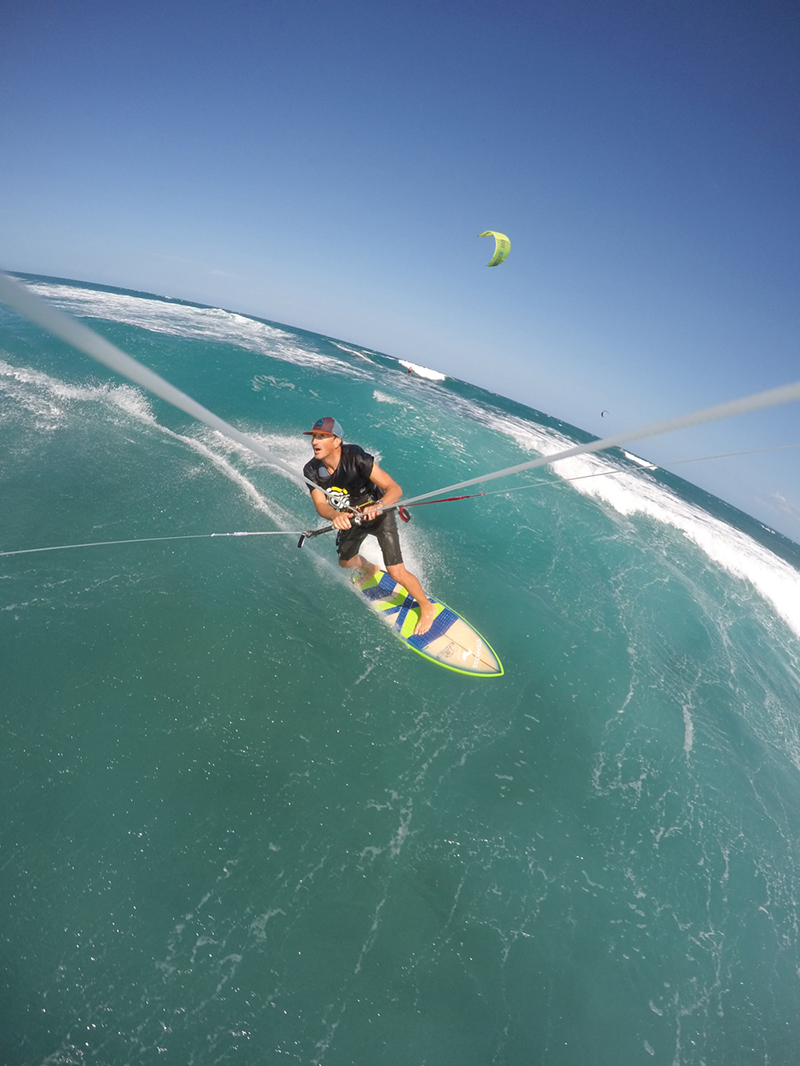
4. Onto the Toes.
Now the kite has started to change direction, it is accelerating away from me, allowing me to start turning onto my toe side edge. I’m still pulling the bar with my right hand making sure to complete the kite rotation. My shinbone and upper body are the same angle in relation to the board, 90 degrees to the board. This gets my weight over the balls of my feet, forcing the board edge into the water.
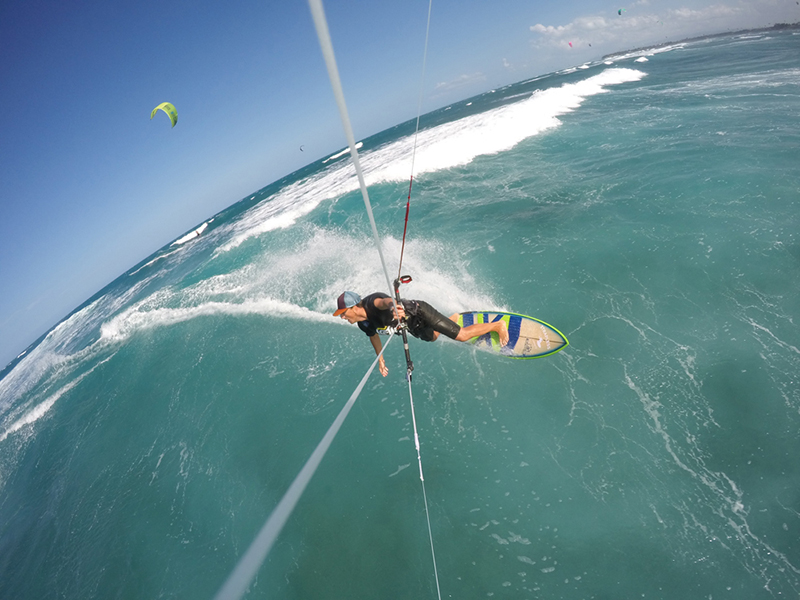
5. Eyes on the Prize.
My eyes are tracking the movement of the wave as it crosses the reef and I watch to see where I think it will break, and I aim for my front side cut back at the crease where the wave will break, the steepest part of the wave. That is the sweet spot.
Looking at the kite lines you can see my kite has finished its rotation and is pulling me through the corner. I am no longer turning the kite. The bar is perpendicular to the center lines. My body weight is committing to the turn with all my weight on the balls of my feet. My knees are bent, forcing my shins ahead of my toes, increasing the angle of leverage on the board. My left hipbone, knee cap and foot are stacked vertically over the board insuring my weight is over my front foot. This forces the edge of the board into the water that begins to create drive in the board. This drive will accelerate the board making for a faster turn, as well as creating line tension that will give you more kite control.
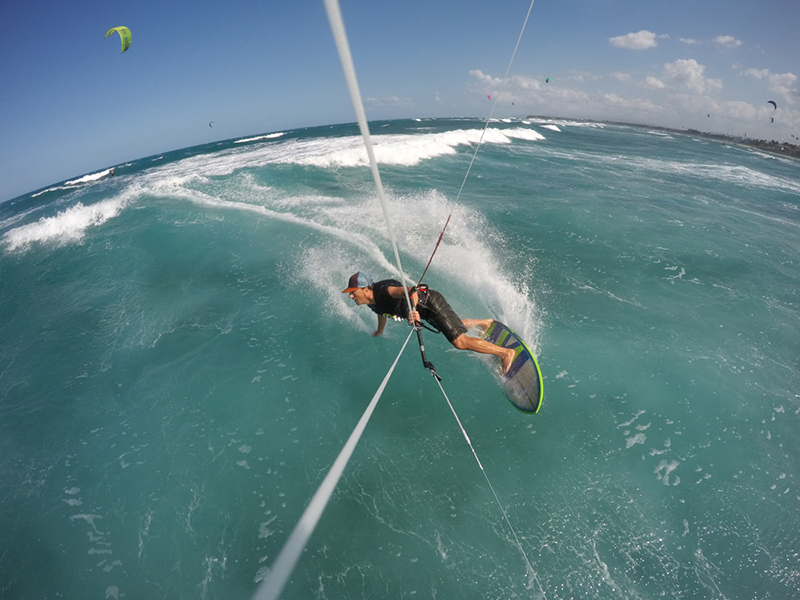
6. Fully committed.
All of my body weight is stacked forward of vertical off my board. My front foot is creating drive, my rear foot is steering the board. For all my Canadian hockey fans, your board is like taking a slap shot. When you hold a hockey stick/lacrosse stick/baseball bat/etc, the lower hand is meant for power to hold the stick in place. The hand at the end of the stick is the control that puts the curve on the puck/ball. It’s the little flick of the wrist that makes all the difference. The rear foot of your surfboard is exactly that, the control. It dictates the size of the turn, the spray of the cutback, and the acceleration through the turn, and more. The back foot is what gives you style and a muscle movement that will be as unique as your signature.
The lower you compress your body, the tighter the turn. Every inch your shoulders lower over your knees, your buttocks must also lower, or you’ll be too top-heavy forward and you’ll go ass over teakettle. This turn isn’t especially tight, so I did not need to go that low.
The hand. Your body should be so committed to the turn that you are able to drag your rear hand. Dragging the rear hands can also be used as a speed stabilizer and emergency balance. If you have too much speed in the turn you can drag your hand for braking.
Many times your toe side turn won’t be on butter flat water, but more likely in some chop. If you get thrown off balance, having your hand already close to the water allows you to use it for an emergency support if you are suddenly thrown. Eyes still on the prize.
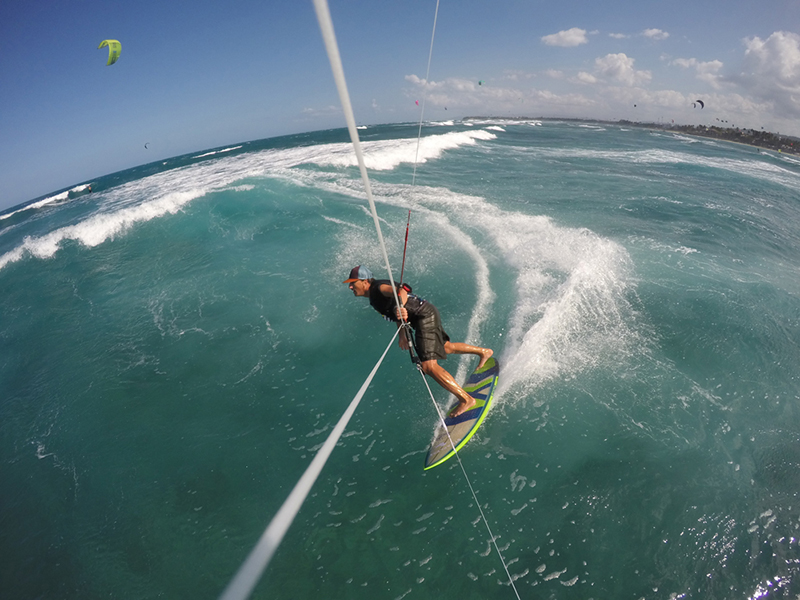
7. Maintain Speed.
I’ve completed the turn so that I am now running back upwind into the wave. My weight is still over the balls of my feet, but I’ve reduced my lean angle. My hips are open to the direction I’m riding making upwind easier. Most of my weight is over my front foot.
Rear foot. Once I’ve completed my turn I no longer need the same leverage over the fins. Many kiters finish their transition to toe side only to lose their speed and slow down before they can reach the wave peak and make their cutback. Too much rear foot pressure is very often the problem. If you stay flat footed once you complete the turn, your hips will be too far back forcing too much weight onto the tail of the board, causing it plough into the water.
Simply lifting your rear heel off the board forces your weight forward over your front leg as you can’t raise your heel if you have too much weight on it. This weight transfer lifts the back of the board, flattens the board in relation to the water, therefore creating less drag resistance. The flatter the board, the faster it will glide. Eyes still on the prize.
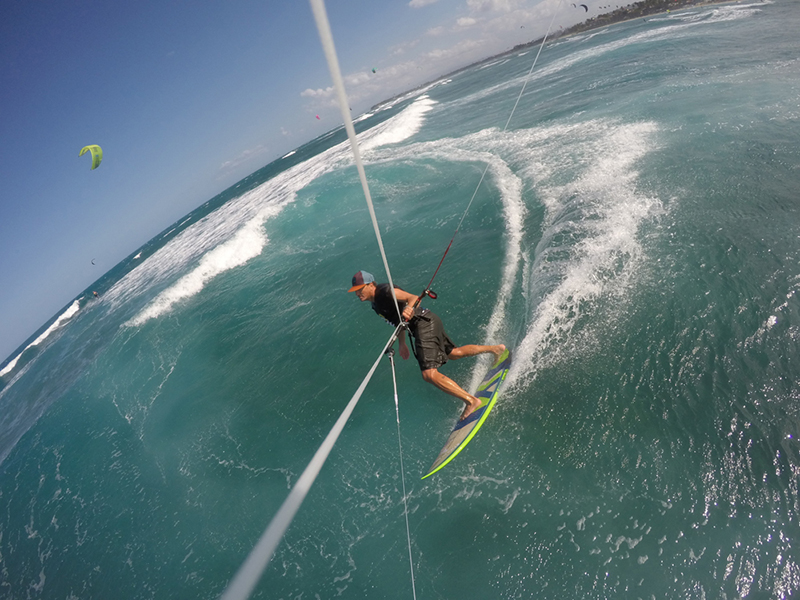
8. The Set Up.
I’m beginning to run back up the face of the wave. Most of my weight is over my front foot. My rear heel is still elevated making sure I carry my speed to get to the top of the wave. My hips and shoulders are open preparing to shift my weight from toe side over to heel side for the transition. I’m so open I’m almost facing forward on the board. I have a bend in my knees to keep my center of gravity low.
My left hand has already started pulling on the bar so that it begins to change direction. Remember, always turn the kite before letting off the board edge.
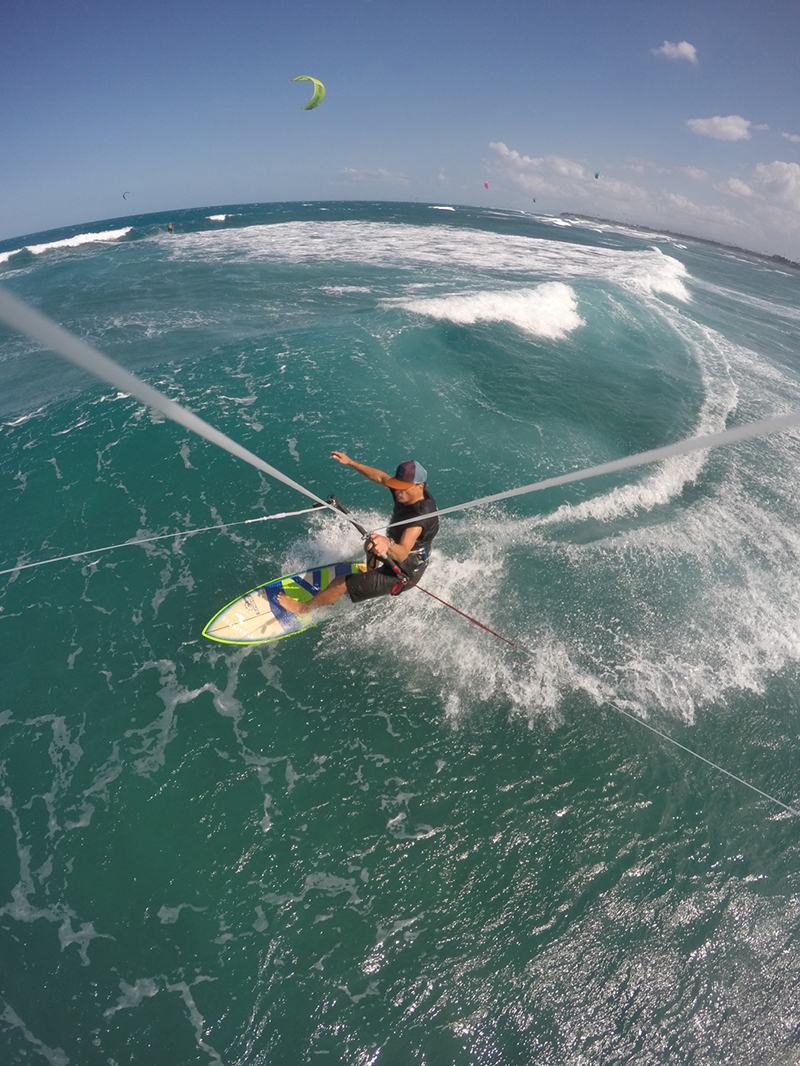
9. The Transition.
In less than five feet I transfer my weight from my toes to my heels. I’m now on the steepest part of the wave, looking straight down the line. I can see where the peak will break in front of me, and I aim for the crease of that spot. My rear foot is flat and my weight is 50/50 over both feet.
The leading edge of my kite is facing up, and is still rotating. My kite turns slower on my cutback side as I do not use it to create power or pull, as I will be using the drop in of the wave to get me back up to speed after the cutback.
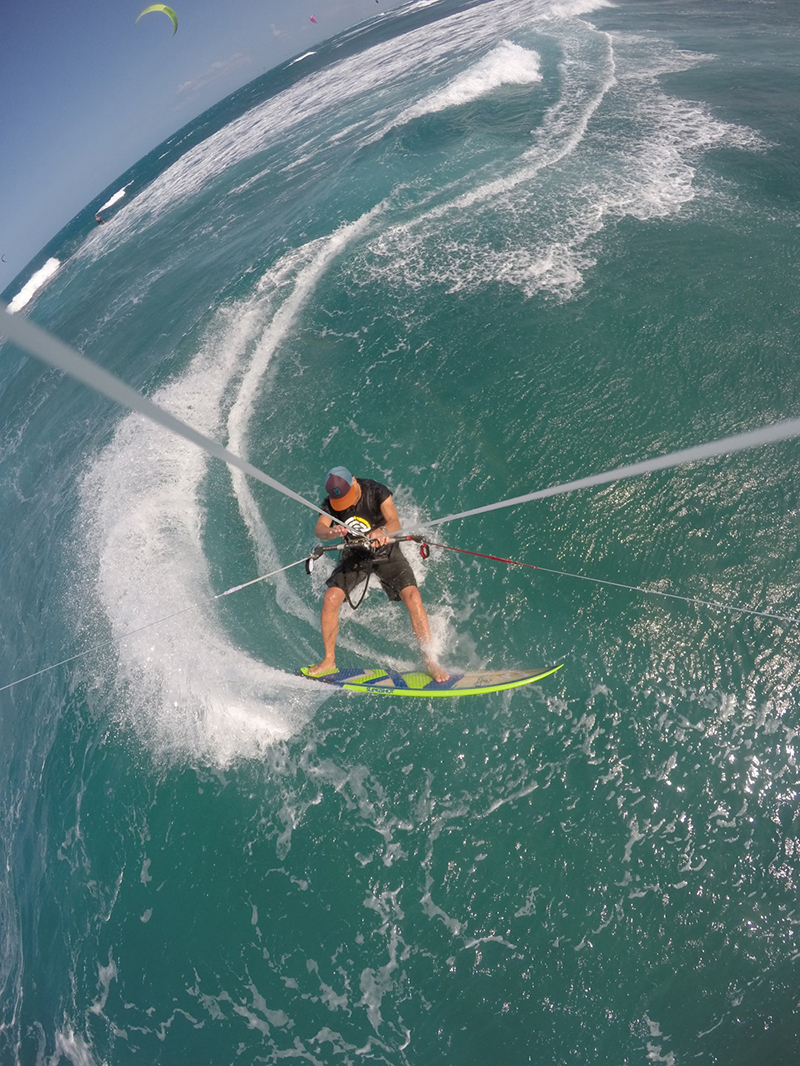
10. The Cutback.
Boom goes the dynamite! All of my weight is firmly planted over my heels. My rear foot is driving the tail of the board into the water and through the cutback. I’m hanging off my lines, leaning as far back as I can without falling into the wave. You can see my ass actually hits the water I lean so far back. Just like on my toe side turn, I am completely committed to the turn throwing all my body weight into the edge of my board. The more weight on the rear foot, the bigger the spray. But it also means the more you slow down as you’re dumping all your speed into the spray. As I progress through the turn I slowly transfer my weight back to my front foot.
My left hand is still pulling on the bar slowly turning my kite. It is 80% through its rotation.
All that’s left to do is pose for the camera. Say CHEEEZE!!
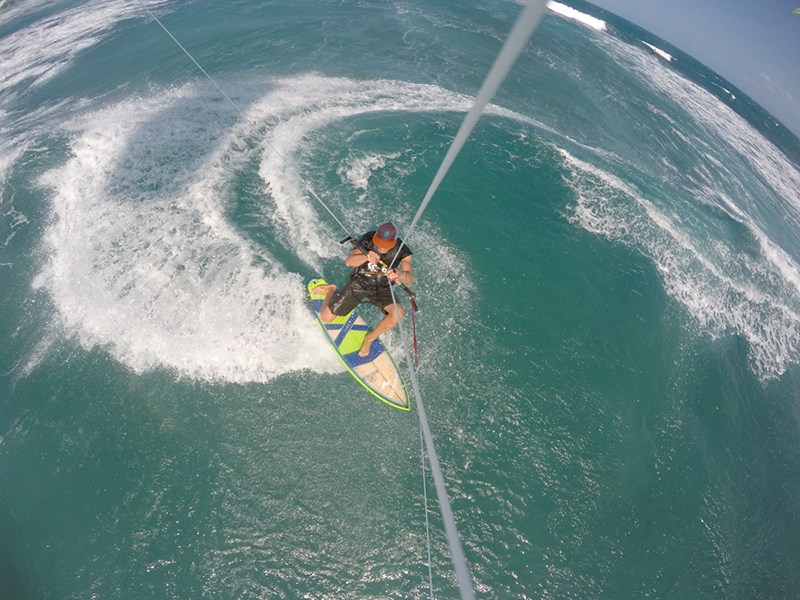
11. The Release.
The harder the cutback, the more speed and momentum you lose. In order not to stop dead in the water and have the wave pass you by, you need to release pressure off the rear foot. It began at the end of the turn until as you can see I completely collapse my rear leg taking 93% of the weight off the foot, by putting my foot on its inside edge to give me board control with no weight. This allows the tail to rapidly plain out of the water, allowing the nose to drop and begin my drop into the wave.
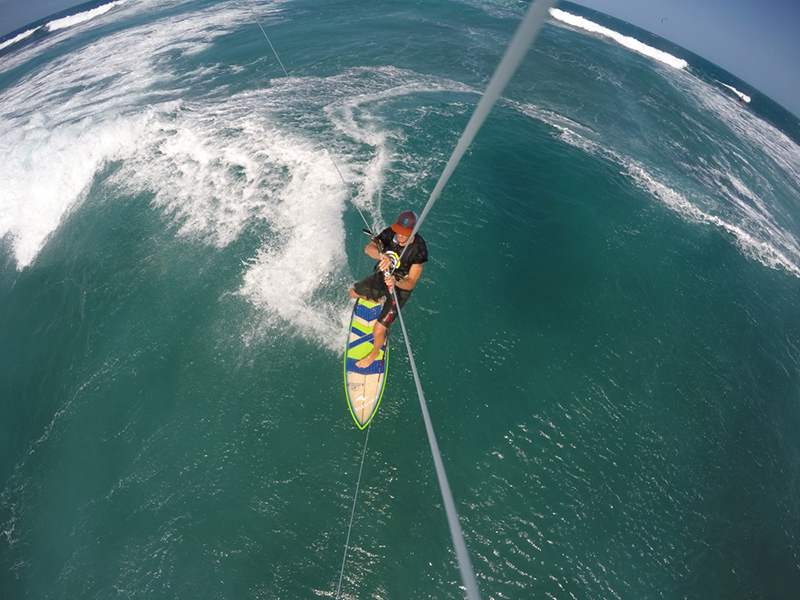
12. The Drop In.
Point your nose down and go! As soon as you begin accelerating, get onto your heel side edge to regain line tension, and to carve down the face. This allows you to stay on the wave without dropping in and out running the fun.
My kite has changed direction and is traveling in the same direction as my line down the wave.
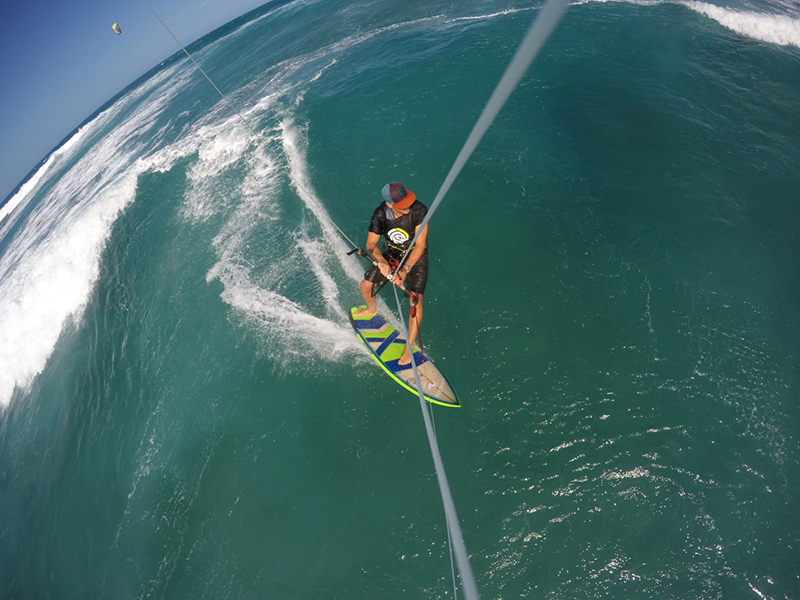
13. Rinse and Repeat
Your body is now in position to begin the series again. Go back to step one and repeat the process until you no longer have any fun.
I hope this instructional essay has helped clarify the technique necessary to ride toe side to heel side in waves. By no means is this the only way. That’s why kitesurfing is so fantastic, we all ride our own way. I welcome any feedback. I hope you enjoyed the read. See you on the water.
Stay salty,
Andreas

